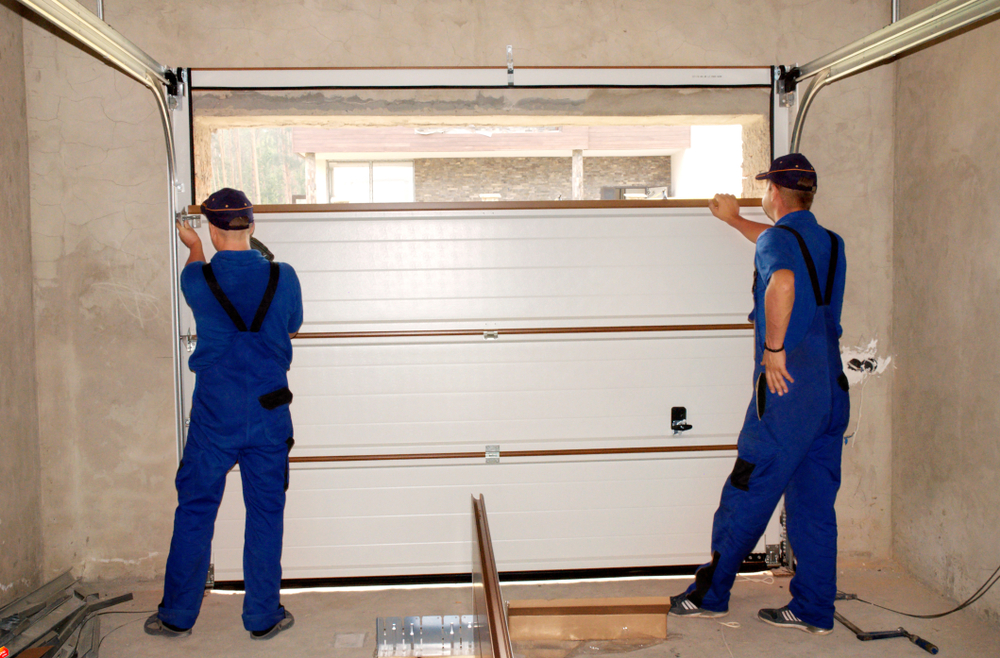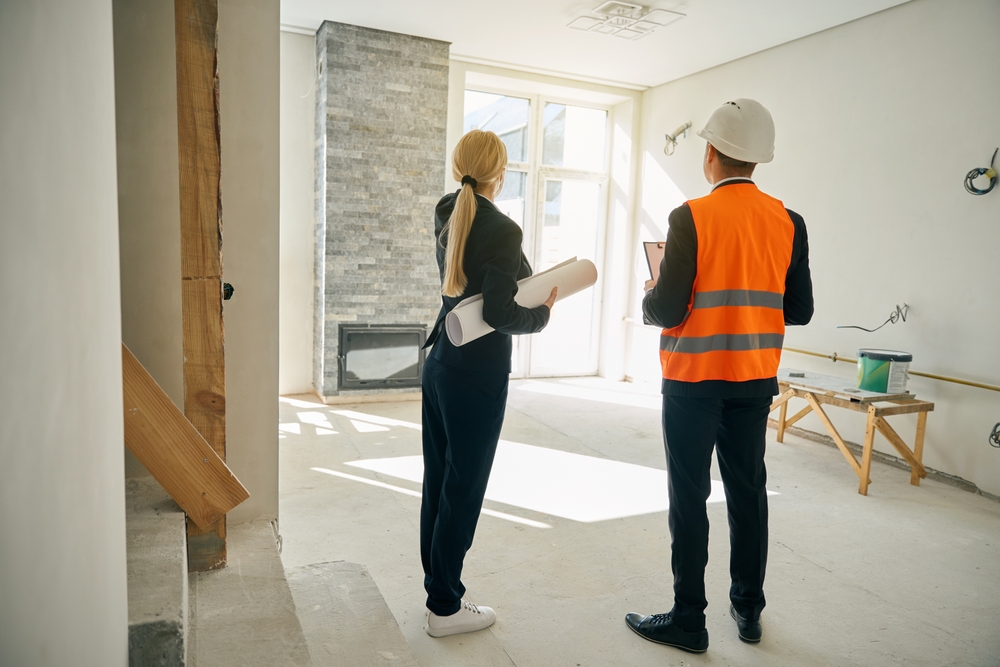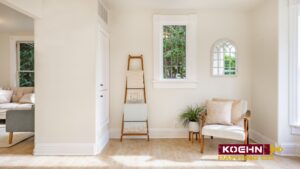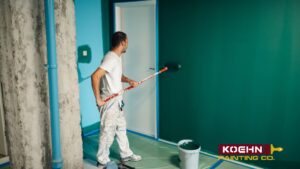Table of Contents
ToggleBuying a house is one of the biggest investments most people will ever make, which is why the idea of “adding value” through renovations is so appealing. A new kitchen, a sleek bathroom, or even a fresh coat of paint can make your home feel brand new. Does renovating a house add value? Of course. But here’s the hard truth: not every renovation pays you back the way you might expect.
Homeowners often fall into one of two camps: those who renovate for personal enjoyment and those who renovate with resale value in mind. Updating a dated kitchen so you can finally host family dinners is priceless—but if you’re expecting every dollar spent to magically boost your home’s market value, you might be in for a surprise.
The key to smart renovation is knowing which projects actually deliver a return on investment and which ones are more about lifestyle than profit. From strategic improvements like exterior painting that immediately boost curb appeal, to costly overhauls that may never pay off, understanding the difference can save you thousands and set you up for a higher resale price when the time comes.
In this guide, we’ll break down the best home improvements to increase value, how to estimate home value after renovation, and what to consider if you’re wondering, “Does renovating a house really add value?”
The Best Home Improvements to Increase Value

When asking best home improvements to increase value, you’re really asking two things: Which projects give the highest return on investment (ROI)? And which upgrades buyers care most about? There are several key improvements consistently rising to the top as smart, value-adding investments—with caveats.
Homeowners often daydream about the perfect renovation: a gleaming kitchen island, a spa‑like bathroom, or a deck that screams “summer nights.” But before you grab a sledgehammer or sign off on a $50,000 remodel, it’s crucial to ask: Which upgrades actually add value to your home?
Not every renovation dollar is the same. Some improvements reliably deliver a strong return on investment (ROI), while others are more about personal enjoyment. Data all point to the same truth: buyers reward functionality, curb appeal, and tasteful updates—not over‑customized luxury.
Let’s break down the best home improvements to increase value, with notes on ROI, buyer psychology, and smart upgrade strategies.
Boost Curb Appeal with Exterior Upgrades
Before buyers step through your front door, they’re already forming an opinion. Curb appeal is often the first and most powerful driver of perceived value. A house that looks well‑maintained signals “move‑in ready” and sparks emotional attachment.
According to HomeLight and the Remodeling 2024 Cost vs. Value Report:
- Garage door replacement tops the ROI charts, returning up to 190% of its cost. At roughly $4,500 installed, the visual impact far exceeds the expense.
- Steel entry doors average 185–188% ROI, giving your facade an instant face‑lift while improving security.
- Stone veneer and siding upgrades can deliver 150%+ ROI and boost perceived value by 5–10%, according to BHG and agent surveys.
But it’s not just about big‑ticket installs. Simple landscaping matters too: trim shrubs, mulch flower beds, pressure wash the walkway, and add warm lighting to guide the eye to your entry. These modest touches often yield some of the highest returns per dollar spent because they change the way buyers feel the moment they arrive.
Kitchens & Bathrooms: ROI Workhorses (If You Keep It Smart)
A small investment outside can make every other upgrade inside feel more valuable. So, when thinking, does renovating a house add value? Exterior improvements are one of the clearest “yes” scenarios.
Walk into any open house and you’ll notice where buyers linger: the kitchen and the bathroom. These are functional spaces that double as lifestyle statements. They’re also the most likely to make or break an offer.
But here’s the secret: mid‑range updates outperform luxury splurges.
- Kitchens:
- Swap dated cabinet doors or paint/reface existing boxes for a fresh, modern look.
- Upgrade hardware, faucets, and add a statement light fixture.
- Minor remodels recoup 90–96% of cost, while luxury overhauls may see lower ROI (62–80%).
- Bathrooms:
- Think spa‑like touches: rain showerheads, double vanities, soaking tubs, sleek storage.
- ROI ranges 73–93%, with functional layout tweaks (like enlarging a cramped bathroom) often paying off best.
Why not go all‑out with marble everything? Because hyper‑personal or high‑end upgrades narrow your buyer pool. A steam shower or black marble floor might thrill one buyer but turn off five others. Neutral, bright, and functional sells.
Pro Tip: If your budget is tight, start small—regrout, swap mirrors, add new fixtures. These changes photograph beautifully for listing photos and suggest a “cared‑for” home.
Finish Existing Spaces: Basements, Attics & Mudrooms
Adding livable square footage without building an addition is a value‑add sweet spot. Buyers love functional space that they don’t have to create themselves.
- Basement and attic conversions typically return 70–75% ROI. A finished basement can become a family room, gym, home theater, or in‑law suite. An attic can transform into an extra bedroom or a quiet office.
- Mudrooms and foyers—even small drop zones with built‑ins, hooks, and cubbies—score points for daily practicality. This renovation pegs ROI at 50%, but it can be the feature that makes your home feel more “finished” than a competitor’s.
The secret is flexibility. A basement that looks like a neutral family room appeals to everyone, while a basement converted into a 1970s tiki bar… not so much. Keep finishes clean, durable, and light to maximize perceived space.
Outdoor Living: Decks, Patios & Smart Landscaping
Outdoor space has been a buyer priority since the pandemic, and while ROI has cooled slightly from that time’s peak, a thoughtful backyard upgrade still moves the needle.
Decks are top performers:
- Wood decks recoup up to 83% of cost.
- Composite decks can return up to 68%.
Patios and modest hardscaping add lifestyle value without overspending and landscaping and lighting often exceed 150–180% ROI when done professionally.
Pools and hot tubs? Buyer response depends heavily on climate and neighborhood norms. In Florida, a pool can boost resale by 7%. In Seattle or Minnesota, it might be seen as a liability due to maintenance and insurance costs.
The bottom line is that outdoor space should feel inviting and usable, but not extravagant. A few seating areas, some greenery, and low‑maintenance features are your safest bet.
Small but Mighty: Paint, Floors, Fixtures & Maintenance
Not every “renovation” requires demo day. In fact, small cosmetic improvements can deliver some of the best ROI in the industry.
- Fresh paint—interior or exterior—can make a home feel new for a fraction of the cost. Stick to light, neutral colors that reflect light and expand visual space.
- Refinish hardwood floors instead of replacing them. HomeLight cites an ROI as high as 147% for this project.
- Lighting and hardware swaps modernize a home instantly: brushed brass or matte black handles, energy‑efficient light fixtures, and sleek faucets create an updated impression.
- Deferred maintenance fixes—leaky windows, loose caulk, minor drywall damage—signal a “move‑in ready” home and prevent buyers from mentally subtracting repair costs from their offer.
These projects shine if you’re prepping for resale soon. They photograph well, feel impactful in person, and rarely break the bank.
Summary Table: Best Home Improvements to Increase Value
| Project / Upgrade | Typical ROI (%) | Why It Adds Value | Pro Tips |
| Garage door replacement | 185–190% | Immediate curb appeal & low cost vs. high perceived value | Choose modern, insulated options; black & wood tones trend |
| Steel front entry door | 185–188% | Boosts security & first impressions | Pair with new hardware and lighting for max impact |
| Stone veneer / new siding | ~150%+ | Transforms exterior look & adds 5–10% to perceived value | Keep colors neutral; mix textures for depth |
| Minor kitchen remodel | 90–96% | High buyer interest; central lifestyle space | Focus on cabinets, countertops, and lighting updates |
| Luxury / major kitchen remodel | 62–80% | Only pays off in high-end markets | Avoid over-personalization; neutral sells |
| Bathroom remodel (spa feel) | 73–93% | Buyers prize functional, modern bathrooms | Add double vanities, rain showerheads, and sleek storage |
| Refinish hardwood floors | ~147% | Instantly refreshes space, low cost vs. visual impact | Stick to timeless wood tones |
| Finish basement / attic | 70–75% | Creates extra livable space without building new | Keep finishes flexible and neutral |
| Mudroom or foyer upgrade | ~50% | Everyday convenience; signals thoughtful layout | Add cubbies, bench, and hooks for a drop‑zone feel |
| Deck (wood) | Up to 83% | Extends living space outdoors; lifestyle boost | Choose durable finishes & plan for low maintenance |
| Deck (composite) | Up to 68% | Longer lifespan than wood, slightly lower ROI | Highlight durability for buyers |
| Patio & simple hardscaping | ~50–70% | Usable outdoor space attracts families & entertainers | Keep it low‑maintenance; add seating & greenery |
| Professional landscaping & lights | 150–180% | High first‑impression factor | Fresh mulch, trimmed shrubs, walkway lighting |
| Pools / hot tubs | Up to 7% (location‑dependent) | Luxury appeal in warm climates; liability in cold ones | Research neighborhood norms before investing |
| Fresh interior/exterior paint | 100%+ | Affordable facelift; makes home “move‑in ready” | Use light, neutral tones for broad appeal |
| Lighting, hardware & small fixes | High perceived value | Modernizes spaces cheaply; prevents buyer objections | Target kitchens, baths, and entryways |
The common thread among the best home improvements to increase value is that they:
- Enhance first impressions (curb appeal, paint, lighting).
- Improve functionality (finished spaces, updated kitchens/baths).
- Stay broadly appealing rather than hyper‑custom.
So, does renovating a house add value? Absolutely—if you focus on updates that balance lifestyle improvements with real resale impact. Big, flashy renovations for personal taste alone rarely pay back dollar‑for‑dollar, while smart, buyer‑friendly upgrades can increase value and speed up your eventual sale.
Contact us here if you would like to find the best painting contractor for your residential or commercial painting needs.
From Plans to Payoff: How to Estimate Home Value After Renovation

Renovating is exciting—and risky. You’re about to commit real money and time, so the question isn’t just does renovating a house add value; it’s how to model that value before you start. In other words: how to estimate home value after renovation with enough confidence to move forward (or to pump the brakes).
Below is a clear, step‑by‑step framework you can use whether you’re refreshing a bath, finishing a basement, or planning a full kitchen revamp. We’ll cover comps, ARV (after‑repair value), realistic cost estimating, and market factors (rates, seasonality, neighborhood caps). You’ll also get simple formulas, worked examples, and red flags to avoid.
The goal is simple. Give you a repeatable process to answer two core questions: What is the ROI of a renovation, and is it worth it—now?
Step 1: Set Your Objective (Enjoyment vs. Resale)
Decide which outcome you’re optimizing for:
- Lifestyle first: You’ll value comfort, layout, and aesthetic gains more than payback. ROI is a sanity check.
- Resale/return first: You’re optimizing for market value and time to sell. ROI, ARV, and comp alignment matter most.
This choice guides every decision that follows—from finishes to scope to timing.
Step 2: Establish Your Baseline Value (Pre‑Renovation)
Start with your home’s current market value using the sales comparison approach (SCA)—the same method appraisers and agents rely on. The SCA compares your home to recent, nearby sales with similar attributes and adjusts for differences (size, condition, beds/baths, location features).
How to do a quick SCA:
- Pull 3–6 recent sales within your micro‑market (ideally the same neighborhood/school zone).
- Target comps sold in the last 3–12 months to reflect current market conditions; appraisals also look at property and comp sales histories within these windows.
- Normalize for GLA (gross living area), bed/bath count, lot size, garage, age/condition. Appraisers make line‑item adjustments for these features to keep comparisons apples‑to‑apples.
Baseline Value (BV) = Median adjusted sale price of your closest, most similar comps.
Keep this number handy—you’ll use it when you calculate ARV and ROI.
Step 3: Define Your Scope and Get Real Costs
This is where many projects drift. “How much could it cost?” is not the same as “How much will it cost for this scope?” Build a line‑item estimate:
- Labor + materials for each trade (demo, framing, plumbing, electrical, drywall, finishes).
- Permits/inspections (and the calendar time they add).
- Fixtures/finishes with SKU‑level choices (you can change your mind later, but budget for your likely choices).
- General contractor overhead and profit.
- Contingency of 10–20% for surprises (hidden damage, lead time swaps, price changes).
- Carrying costs if you’re borrowing: interest, insurance, utilities during the project.
How to make an estimate for house renovation? Gather at least two written bids for the same scope, compare inclusions/exclusions, and add your contingency and carrying costs on top. If you’re adding a bedroom or new space, sanity‑check against typical per‑square‑foot ranges in your area (e.g., one national estimate for a bedroom addition is about $140/sq ft as a starting point).
Step 4: Compute ARV (After‑Repair Value)
ARV is the estimated market value of your home after the planned improvements are complete. Investors, flippers, and savvy homeowners use it to see how the best home improvements to increase value translate into real dollars before they ever pick up a hammer.
Two practical ways to estimate ARV:
- Comp Replacement Method
- Find comps that already have the finishes/features you’re adding (e.g., updated kitchen + 2 baths + finished basement).
- Use their adjusted sale prices to estimate where your home would land after the work. (This mirrors how appraisers apply the sales comparison approach.)
- Price‑Per‑Square‑Foot (PPSF) Cross‑Check
- Take the median PPSF of upgraded comps and multiply by your home’s projected finished GLA (be careful to separate above‑grade vs. below‑grade; many markets value basement square footage differently).
- Adjust for qualitative features your home will still lack (view, lot size, school tier), and for features you’ll gain (additional bath, functional layout).
ARV Formula (simple):
ARV = Median adjusted price of renovated comps (or PPSF × projected GLA).
What Is ARV? (Explained in Plain English)
After‑Repair Value (ARV) is your best estimate of what the market will pay after your improvements. It’s essential for investors and extremely useful for homeowners deciding whether to renovate now.
How to build your ARV confidently:
- Pick comps that already have your planned features (e.g., “updated kitchen + 2 updated baths + finished basement”).
- Adjust for the differences you won’t fix (e.g., your lot is smaller, or you’re near a busier street).
- Cross‑check with PPSF—but remember basements often price differently than above‑grade space in appraisals and MLS stats.
- Stress‑test your ARV by applying a conservative haircut (e.g., subtract 2–5%) to reflect market risk and timing.
Investor rule of thumb (if you’re selling soon):
- Look for a minimum target ROI that compensates for risk and carrying costs.
- Run base, conservative, and best‑case ARV scenarios and ensure the project works in the conservative case.
Step 5: Calculate ROI and Payback
Now tie it together.
- Value Lift = ARV − BV
- Total Project Cost = All‑in renovation budget (scope + contingency + carrying costs)
- ROI = (Value Lift ÷ Total Project Cost) × 100%
- Equity Gain (on paper) = Value Lift − Total Project Cost
What is the ROI of a renovation?
It’s the percentage of your all‑in costs that you “get back” in increased value. If ARV is $600,000, BV is $540,000, and all‑in costs are $35,000, then Value Lift is $60,000 and ROI ≈ 171%.
Add a time element if you’re selling soon:
- Payback horizon = Will the project speed up time‑to‑sell or reduce price cuts?
- Opportunity cost = What else could your cash be doing (debt payoff, other investments)?
Step 6: Stress‑Test with Market Reality (2025 Lens)
Conditions change. Two macro forces to watch right now:
- Mortgage rates: This year, average 30‑year fixed rates hovered around 6.7%, with economists expecting only modest easing. Elevated rates can cap buyer budgets and temper price growth—so be conservative in your ARV.
- Remodeling ROI trend: Last year’s Cost vs. Value Report showed a notable rebound in average ROI versus two years ago (a “definitive turnaround” after post‑pandemic volatility). Still, ROI is project‑ and market‑specific—use national trends as context, not your estimate.
What If You’re Adding Space? (Bedrooms, Baths, Basements)
When creating new space (or new counts like an extra bath), it helps to know typical value impacts:
- Adding a bedroom: Some markets see up to $50,000 value bump, but always test it with comps; costs for additions are often $140/sq ft as a starting estimate.
- Primary suite addition: Often returns 52% of cost at resale—done for lifestyle more than payback.
- Bathroom addition: Across 20 markets, average value increase of 5.7% (higher in some metros).
- Finished basement: Average value increase of 6.6% nationally (varies widely by city and whether below‑grade counts toward GLA locally).
- General addition payoff: Typical payback for a 20’×20′ addition is around 56% of cost (very market‑ and spec‑dependent).
- More square footage overall: Above‑grade livable space increases value—one national estimate pegs average lift around 5.3%, but comps will tell your real story.
It’s important to know that those figures are starting reference points we used here only because they add non‑overlapping detail vs. your earlier section. We still recommend validating in your micro‑market with comps and an appraiser/agent sanity check.
Common Pitfalls That Skew Your Estimate
After you’ve followed our steps carefully, you might still want to check this final list of common pitfalls to avoid:
- Using the wrong comps: If your comps sit across a major road/school boundary, your ARV will be wrong. Stick to the true micro‑market.
- Ignoring concessions: If a comp included large seller credits, appraisers require adjustments that may reduce its effective price.
- Over‑personalized finishes: Great for you, not for resale. Keep it broadly appealing (a finding echoed in Cost vs. Value trend discussion).
- Under‑budgeting: Forgetting contingency or carrying costs.
- Mispricing below‑grade space: Many markets value finished basements less than above‑grade GLA; don’t multiply the same PPSF across both.
If you’d like to avoid these, you can always bring a pro. This can also help you plan a better ROI. A top local agent can flag over‑spend risks and help you choose finishes that sell—before you buy them. Spend where buyers value.
Also, not always necessary, but helpful for large projects: appraisers can provide a “subject to completion” value opinion based on plans/specs using the sales comparison approach.
If you can tick all these boxes, you’ve answered how to estimate home value after renovation with a process you can trust. And remember, does renovating a house add value? Yes—when you buy the right materials and the right comps.
So, Does Renovating a House Add Value?

Renovating your home is both a financial and emotional decision. The excitement of creating a dream kitchen, spa‑like bathroom, or inviting outdoor space is real—but so is the risk of overspending.
Before starting any project, homeowners need to step back and ask the essential question: does renovating a house add value in my market and for my goals? This guide has shown that the answer is yes—but only when your choices are strategic, your costs are realistic, and your expectations are grounded in ROI, comps, and market conditions.
By focusing on the best home improvements to increase value, you balance lifestyle enjoyment with financial return. Exterior upgrades, mid‑range kitchen and bath remodels, finished spaces, and small but impactful updates like fresh paint or refinished floors are proven winners.
Calculating your ARV, understanding local trends, and stress‑testing your renovation plans help ensure that every dollar you spend works toward real equity, whether you plan to sell soon or simply protect your investment for the future.
Ultimately, does renovating a house add value? Absolutely—when it’s done with purpose. Strategic renovations improve daily living, enhance curb appeal, and make your property more competitive in any market. Instead of chasing trends or over‑customizing, focus on timeless, broadly appealing upgrades and a clear ROI plan. When you combine smart planning with quality execution, you’re not just upgrading your home—you’re securing its place as a stronger, more valuable asset.
Discover the Koehn Painting difference – contact us today for a free estimate and step into a vibrant, freshly painted home!




